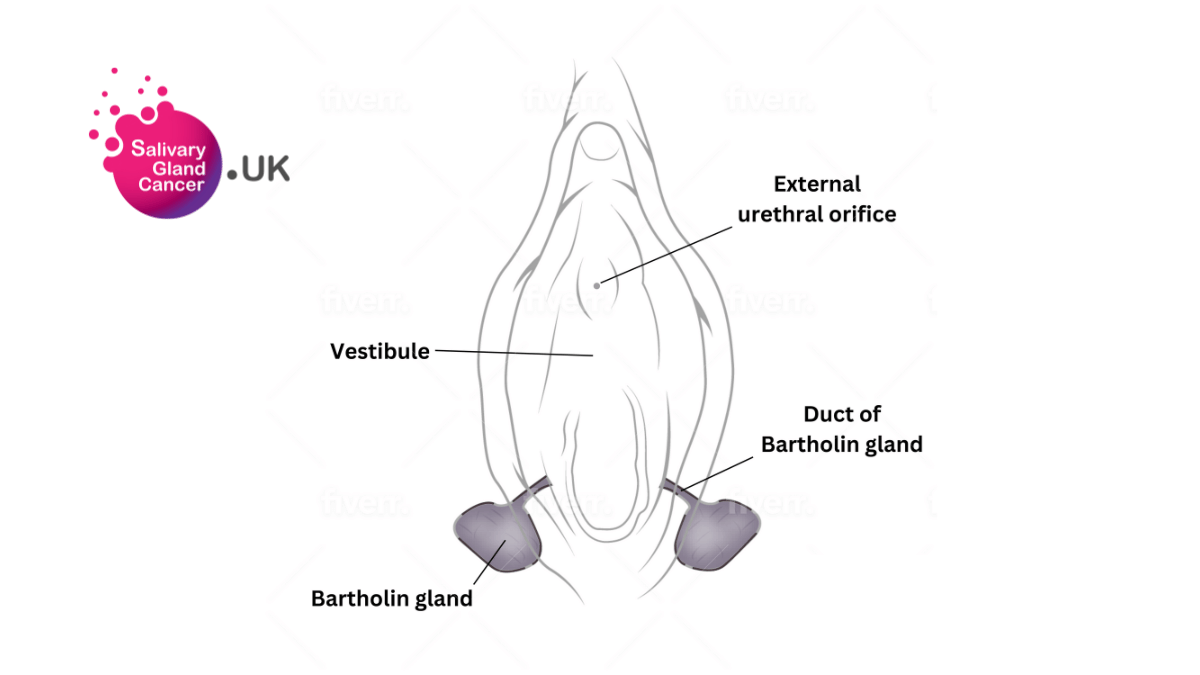Secretory Glands - Bartholin's Gland
Salivary gland cancers are most often found in the head and neck. But salivary gland-type cancers can also begin in secretory glandular tissue across the body, including in the Bartholin’s glands, which are found in the vulva.
There are two Bartholin’s glands. Situated towards the bottom of the vulva, they sit just behind the lips that surround the lower entrance to the vagina. About the size of a pea, they are filled with fluid that travels through a duct to lubricate the vagina during sex.
Around 10-15% of cancers in the Bartholin's gland are caused by the salivary gland-type cancer, Adenoid Cystic Carcinoma. Cancer of the Bartholin’s gland is rare, and is regularly mistaken for the much more common – and benign – condition, the Bartholin’s gland cyst.
Although salivary gland-type cancer in the Bartholin’s gland can initially be asymptomatic, ongoing symptoms can include a palpable painful lump on one or both sides of the bottom of the opening to the vagina, a burning sensation or skin lesions and ulcerations in that area.
Related publication/s:
'Adenoid cystic carcinoma of the Bartholin's gland is underpinned by MYB-and MYBL1-rearrangements'.
Objective: Adenoid cystic carcinoma (AdCC) of the Bartholin's gland (AdCC-BG) is a very rare gynecologic vulvar malignancy. AdCC-BGs are slow-growing but locally aggressive and are associated with high recurrence rates. Here we sought to characterize the molecular underpinning of AdCC-BGs.
Methods: AdCC-BGs (n = 6) were subjected to a combination of RNA-sequencing, targeted DNA-sequencing, reverse-transcription PCR, fluorescence in situ hybridization (FISH) and MYB immunohistochemistry (IHC). Clinicopathologic variables, somatic mutations, copy number alterations and chimeric transcripts were assessed.
Results: All six AdCC-BGs were biphasic, composed of ductal and myoepithelial cells. Akin to salivary gland and breast AdCCs, three AdCC-BGs had the MYB::NFIB fusion gene with varying breakpoints, all of which were associated with MYB overexpression by IHC. Two AdCC-BGs were underpinned by MYBL1 fusion genes with different gene partners, including MYBL1::RAD51B and MYBL1::EWSR1 gene fusions, and showed MYB protein expression. Although the final AdCC-BG studied had MYB protein overexpression, no gene fusion was identified. AdCC-BGs harbored few additional somatic genetic alterations, and only few mutations in cancer-related genes were identified, including GNAQ, GNAS, KDM6A, AKT1 and BCL2, none of which were recurrent. Two AdCC-BGs, both with a MYB::NFIB fusion gene, developed metastatic disease.
Conclusions: AdCC-BGs constitute a convergent phenotype, whereby activation of MYB or MYBL1 can be driven by the MYB::NFIB fusion gene or MYBL1 rearrangements. Our observations further support the notion that AdCCs, irrespective of organ site, constitute a genotypic-phenotypic correlation. Assessment of MYB or MYBL1 rearrangements may be used as an ancillary marker for the diagnosis of AdCC-BGs.
Feinberg, J., Paula, A. D. C., da Silva, E. M., Pareja, F., Patel, J., Zhu, Y., ... & Weigelt, B. (2024). Adenoid cystic carcinoma of the Bartholin's gland is underpinned by MYB-and MYBL1-rearrangements. Gynecologic Oncology, 185, 58-67.

